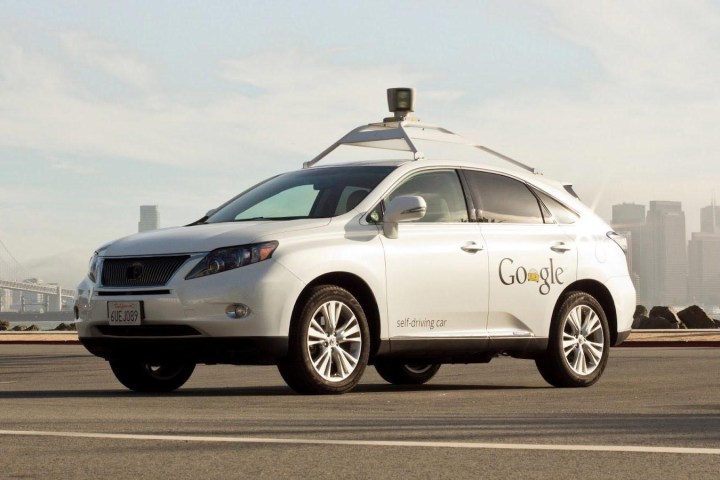
But what if its technology catastrophically fails, or someone jumps out in front of the car too late for its sensors to initiate evasive action? Or perhaps the on-board safety driver could pull a wrong move that results in a collision with a pedestrian. Google has evidently been considering such scenarios, having this week secured a patent for an idea that would effectively turn the hood of its cars into human flypaper.
The idea is that if a pedestrian was unfortunate enough to find him or herself in the path of one of Google’s self-driving cars, they’d stick fast to the hood instead of bouncing off and hitting another object, likely suffering more injuries in the process.
But what if … ?
However, if the car is seriously out of control, we’re not sure that staying stuck to the hood would offer the best outcome if the vehicle is careering toward, say, a wall or a large body of water. In these kinds of situations, bouncing off the hood actually seems like a really good idea.

“The adhesive bonds the pedestrian to the vehicle until it stops, and is not thrown from the vehicle, thereby preventing a secondary impact between the pedestrian and the road surface or other object.” But like we said, you know, walls, lakes, other cars …
It’s also worth considering how the pedestrian, if seriously injured, would receive medical treatment. Who knows, it might be easier to pull the hood off the car with the injured person still attached than pull the person off the hood, though getting the whole lot into an ambulance is likely to present additional challenges.
The patent demonstrates how Google is looking into different ideas to reduce the possibility of injuries caused by faulty or inadequate driving technology, or erroneous actions taken by safety drivers. Of course, many tech and car firms, Google of course included, have long-been working on pedestrian-detection systems, though until these are perfected, a sticky car could conceivably come in useful on some occasions. If Google ever decides to further develop the idea, that is.
Editors' Recommendations
- Google is bringing Chrome browser to cars, even more EV features to Maps
- Google’s Pixel 6a could be coming far sooner than expected
- Google could bring back the ultrawide selfie camera with the Pixel 6 Pro
- Google could finally address this huge frustration with Chrome tabs
- Google deploys a Jaguar I-Pace as its first all-electric Street View car


